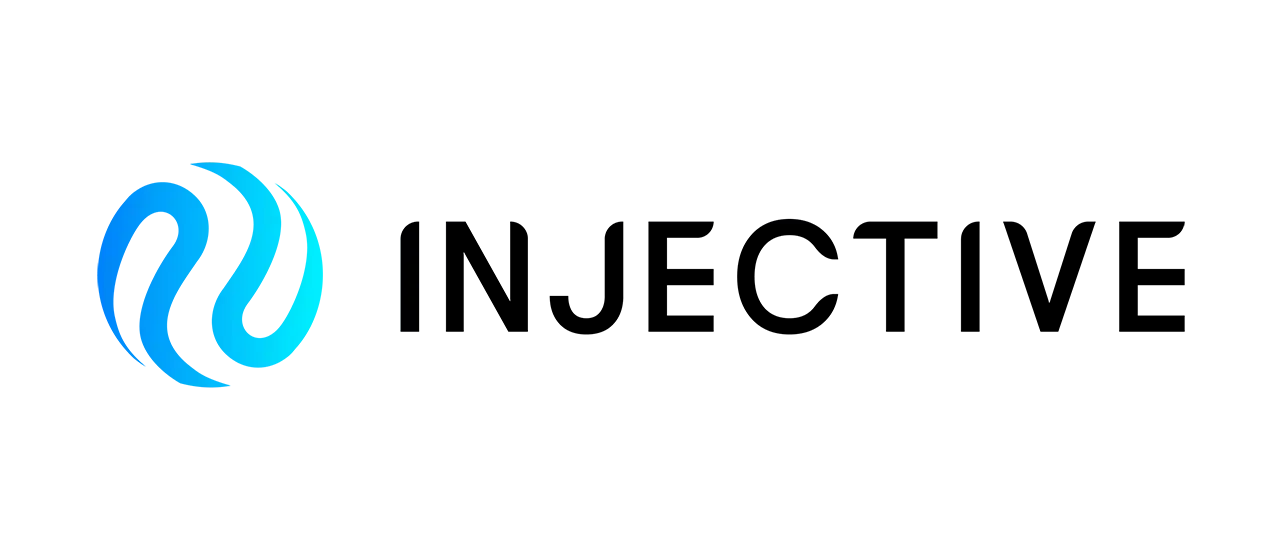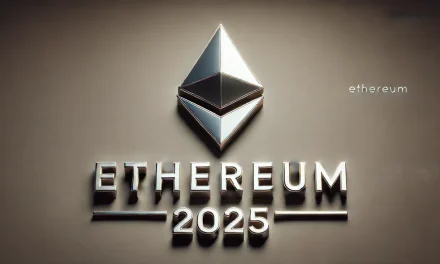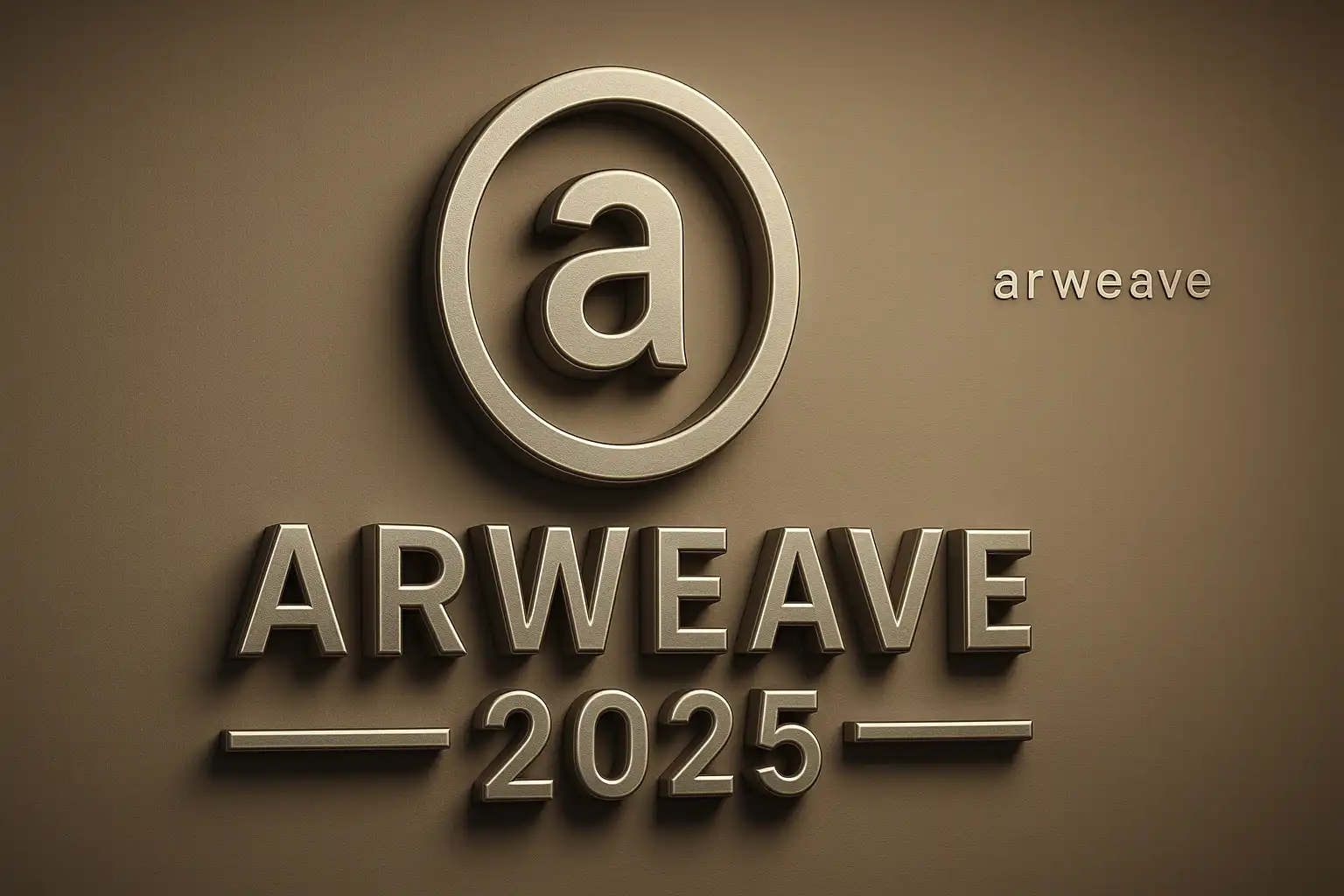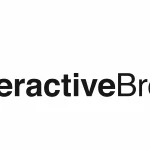Comparative Analysis: Injective vs. Other Layer-1 DeFi Platforms
Technical Architecture Comparison
Injective’s technical foundation offers distinct advantages when compared to competitors like Solana and Avalanche. While Solana emphasizes raw transaction throughput (65,000+ TPS) through its unique Proof of History consensus mechanism, Injective prioritizes financial application optimization with its Tendermint-based architecture delivering approximately 10,000 TPS with instant finality. Avalanche, meanwhile, employs a novel consensus protocol featuring multiple interoperable blockchains that achieve finality in 1-2 seconds. Injective’s architecture decisions reflect its specialized focus on DeFi applications rather than general-purpose computing, resulting in execution environments specifically tailored for financial transactions.
The three platforms also differ significantly in their approach to smart contract environments. Solana uses its proprietary programming language, Rust, which offers high performance but presents a steeper learning curve for developers. Avalanche supports multiple virtual machines, including the Ethereum Virtual Machine (EVM), making it accessible to Ethereum developers. Injective combines CosmWasm smart contracts with EVM compatibility, creating a hybrid environment that provides both accessibility and performance. Injective’s EVM implementation reportedly delivers performance up to 1200% faster than traditional EVM chains, addressing a critical bottleneck for complex DeFi applications.
Market Positioning and Ecosystem Development
Each platform has carved out a distinct position within the broader DeFi landscape. Solana has established itself as a high-performance blockchain hosting a diverse ecosystem spanning DeFi, NFTs, and gaming applications. Its TVL (Total Value Locked) has consistently ranked among the top five blockchains. Avalanche positions itself as an “Ethereum alternative” with lower fees and faster confirmation times while maintaining EVM compatibility for easy migration. Its subnet architecture allows for customizable blockchains tailored to specific applications.
Injective, by contrast, has focused intensely on financial applications, particularly derivatives trading. This specialized approach has resulted in a more concentrated but deeply integrated ecosystem. While Injective’s total value locked trails behind Solana and Avalanche, its trading volumes for derivatives and perpetual futures have shown impressive growth. Injective’s emphasis on derivatives trading—a trillion-dollar market in traditional finance—represents a strategic decision to target a specific high-value segment rather than competing broadly across all DeFi categories.
Governance and Decentralization
Governance structures vary significantly among these Layer-1 platforms. Solana has faced criticism regarding its decentralization, with a significant portion of SOL tokens held by venture capitalists and the Solana Foundation. Validator requirements are also relatively high, limiting network participation. Avalanche employs a sophisticated governance system where AVAX tokens are used for voting across different decision types, with separate mechanisms for technical and community governance.
Injective’s DAO-based governance offers a more direct approach to community control. INJ token holders can propose, debate, and vote on all aspects of protocol development. The platform’s validator requirements are more accessible than Solana’s, resulting in broader participation in consensus. This governance structure aligns with Injective’s philosophy of creating truly decentralized financial infrastructure—a critical consideration for DeFi applications that aim to replace traditional, centralized financial systems.
Developer Experience and Tooling
Developer adoption remains crucial for any Layer-1 platform’s success. Solana has invested heavily in developer tooling, including grants, hackathons, and extensive documentation. Its Anchor framework simplifies building on Solana, though the requirement to learn Rust presents an initial barrier. Avalanche leverages its EVM compatibility to attract Ethereum developers, allowing them to migrate existing applications with minimal code changes.
Injective offers a hybrid approach to developer experience. Its compatibility with both CosmWasm and EVM contracts provides flexibility for developers from different backgrounds. The platform’s specialized financial primitives—including built-in order book functionality, oracle integration, and derivatives templates—significantly reduce the development time for complex financial applications. While Injective’s developer community is smaller than Solana’s or Avalanche’s, its focused approach has attracted specialized teams building sophisticated financial products.
Performance Metrics and Transaction Costs
Transaction performance and costs reveal significant differences in platform priorities. Solana consistently delivers the highest raw transaction throughput among the three, though it has experienced occasional network outages during periods of extreme congestion. Transaction fees remain consistently low, typically below $0.01. Avalanche offers high throughput with its multi-chain architecture, maintaining low fees except during network congestion events.
Injective takes a different approach to performance optimization. Rather than maximizing raw TPS, it focuses on deterministic finality and execution efficiency for financial transactions. Its fee structure differs from competitors, with a portion of transaction fees being burned, creating deflationary pressure on the INJ token. While base transaction costs are comparable to Avalanche, the specialized financial transactions on Injective—such as derivative order creation and settlement—demonstrate improved efficiency compared to similar operations on general-purpose blockchains.
Regulatory Considerations and Future Resilience
As regulatory scrutiny of cryptocurrency intensifies globally, each platform faces different challenges. Solana’s broad ecosystem includes applications that may face regulatory questions, particularly in jurisdictions with strict securities laws. Avalanche’s subnet architecture potentially offers regulatory advantages by allowing compliant environments separated from the main network.
Injective’s focus on decentralized derivatives trading places it in a complex regulatory landscape, as derivatives face stringent regulation in traditional finance. However, the platform’s emphasis on true decentralization—including decentralized order book management and governance—positions it to navigate regulatory challenges. By eliminating central points of control, Injective reduces regulatory pressure on any single entity, distributing responsibility across the network. This approach may prove advantageous as regulatory frameworks evolve around DeFi applications.
In summary, while Solana and Avalanche pursue broader ecosystem growth across multiple application categories, Injective has differentiated itself through specialized financial infrastructure optimized for derivatives and complex trading instruments. This focused strategy has resulted in technical advantages for specific use cases, though at the cost of broader ecosystem diversity. As the Layer-1 landscape continues to evolve, Injective’s specialized approach represents an alternative path to adoption—focusing on depth rather than breadth in application support.
Interoperability and Cross-Chain Functionality
The ability to communicate and transfer assets across different blockchain networks has become increasingly critical in the fragmented DeFi landscape. Each of the three platforms approaches interoperability with distinctly different strategies.
Solana’s interoperability approach centers around Wormhole, its primary cross-chain messaging protocol. Wormhole enables communication with major blockchains including Ethereum, Binance Smart Chain, and Terra, allowing for asset transfers and cross-chain application development. Additionally, Solana has integrated with Allbridge and other third-party bridges to expand its connectivity. Despite these advancements, Solana’s ecosystem remains somewhat self-contained, with the majority of applications optimized to operate primarily within the Solana environment rather than as multi-chain protocols.
Avalanche takes a multi-faceted approach to interoperability through its unique architecture. Its primary interoperability feature is the Avalanche Bridge (AB), which facilitates asset transfers between Avalanche and Ethereum. Moreover, Avalanche’s subnet architecture inherently supports a form of internal interoperability, allowing specialized blockchains to communicate within the Avalanche ecosystem while maintaining their own validator sets and compliance requirements. Avalanche has also aligned with cross-chain protocols like Chainlink’s Cross-Chain Interoperability Protocol (CCIP) to enhance its connectivity with other networks.
Injective distinguishes itself with a more integrated approach to interoperability through its Cosmos-based architecture. As part of the Cosmos ecosystem, Injective leverages the Inter-Blockchain Communication (IBC) protocol, allowing native communication with other Cosmos-based chains without requiring trusted bridges. This enables seamless asset transfers and cross-chain smart contract interactions across the growing Cosmos ecosystem. Beyond IBC, Injective has implemented Wasm-based smart contracts that facilitate interoperability with non-Cosmos chains, including Ethereum and Solana, through specialized bridge protocols.
Injective’s interoperability strategy aligns with its financial focus—enabling traders to access liquidity and instruments across multiple blockchains from a single interface. For example, a derivatives trader on Injective can potentially use collateral from Ethereum, trade against liquidity from other Cosmos chains, and settle in stablecoins from various sources. This approach significantly reduces the fragmentation that typically challenges DeFi users who must navigate multiple disconnected platforms.
The security implications of these different interoperability approaches merit consideration. Solana’s reliance on bridging solutions introduces additional security vectors, as demonstrated by the $320 million Wormhole exploit in 2022. Avalanche’s hybrid approach combines the security risks of external bridges with the relative safety of its internal subnet communications. Injective’s use of IBC potentially offers enhanced security for cross-chain communications within the Cosmos ecosystem, as IBC is a protocol-level solution rather than a third-party bridge implementation.
Looking forward, interoperability will likely become an increasingly important differentiator as DeFi users demand seamless experiences across blockchains. Injective’s built-in interoperability through IBC positions it advantageously for this multi-chain future, particularly for financial applications that benefit from accessing liquidity across multiple networks. While Solana and Avalanche continue to develop their cross-chain capabilities, their approaches currently require more middleware and third-party solutions than Injective’s more integrated strategy.
Security Track Records and Vulnerability Management
The security posture of Layer-1 platforms represents a critical consideration for both developers and users, particularly in financial applications where vulnerabilities can result in significant asset losses. Injective, Solana, and Avalanche have each established distinct security track records that reflect their architectural choices and organizational priorities.
Historical Vulnerabilities and Incidents
Solana has experienced several high-profile security incidents since its mainnet launch. Most notably, the network has suffered from multiple outages—seven significant incidents between 2021 and 2023—primarily caused by congestion issues that overwhelmed validator nodes. While these weren’t security breaches in the traditional sense, they highlighted reliability concerns that impact the platform’s suitability for critical financial infrastructure. Additionally, the Solana ecosystem has experienced several major bridge exploits, including the $320 million Wormhole hack in February 2022 and the $100+ million Mango Markets price manipulation attack in October 2022. These incidents, while not failures of the core protocol, demonstrated vulnerabilities in the broader ecosystem.
Avalanche has maintained a relatively stable core protocol since launch, with no major outages reported on its primary network. However, the platform has not been immune to security challenges. Its bridge infrastructure has experienced exploits, though less severe than those affecting Solana. More significantly, multiple DeFi applications built on Avalanche have suffered security breaches, including Platypus Finance ($9 million) and Nereus Finance ($371,000). Avalanche’s subnet architecture presents unique security considerations, as the security of individual subnets may vary based on their validator requirements and consensus parameters.
Injective has distinguished itself with a remarkably clean security record relative to its competitors. The core protocol has experienced no significant outages or exploits since mainnet launch. This stability can be attributed to several factors, including Injective’s Cosmos SDK foundation (which benefits from years of security hardening), its more focused application scope, and rigorous security practices. The platform’s derivatives protocols and financial applications have similarly avoided major security incidents, although they have operated at lower total value locked than some applications on competing chains.
Security Practices and Auditing
Each platform approaches security validation differently. Solana Labs has established a bug bounty program with rewards up to $1 million for critical vulnerabilities. The core protocol has undergone audits by several firms, including Jump Crypto and Kudelski Security. However, the rapid development pace of Solana has occasionally resulted in features being deployed before comprehensive security reviews are completed.
Avalanche, developed by Ava Labs, maintains an ongoing security relationship with several auditing firms and has established a bug bounty program through Immunefi with rewards up to $1 million. The platform’s security approach emphasizes formal verification of critical components and rigorous testing of network upgrades before deployment. Avalanche’s subnet architecture introduces additional security considerations, as each subnet may implement custom security measures and auditing requirements.
Injective takes a multi-layered approach to security. The platform benefits from the security foundations of the Cosmos SDK, which has undergone extensive auditing and real-world testing across numerous blockchains. Additionally, Injective Labs has partnered with specialized security firms for smart contract audits, particularly focusing on the financial primitives that form the core of its ecosystem. The platform’s DAO-governed security fund provides an additional layer of protection by allocating resources for ongoing security improvements and potential incident response.
Vulnerability Disclosure and Response
The response mechanisms to discovered vulnerabilities vary significantly across these platforms. Solana has demonstrated a rapid response capability, deploying fixes quickly when issues are identified. However, its incident communication has been criticized during outages, with delayed updates to stakeholders. The Solana Foundation has since improved its incident response procedures, establishing a dedicated status page and more transparent communication channels.
Avalanche maintains a structured vulnerability disclosure program, with clear procedures for reporting and addressing security issues. Ava Labs has demonstrated effective coordination with ecosystem projects during security incidents, helping to mitigate potential damages. The platform’s multi-chain architecture potentially allows for containing security issues to affected subnets, limiting broader ecosystem impact.
Injective’s approach to vulnerability management emphasizes prevention through comprehensive testing and formal verification where possible. When issues are identified, the platform’s governance mechanism allows for rapid deployment of security fixes through on-chain voting. This process combines technical responsiveness with community oversight. Additionally, Injective’s connection to the broader Cosmos ecosystem provides access to shared security resources and expertise, enhancing its response capabilities.
Consensus Security and Economic Guarantees
The underlying consensus mechanisms of these platforms provide different security guarantees. Solana’s Proof of History combined with Proof of Stake creates high throughput but has shown vulnerability to certain denial-of-service attack vectors. The network’s relatively high validator requirements ($1M+ in hardware and SOL stake) result in a more concentrated validator set, potentially impacting decentralization aspects of security.
Avalanche’s consensus protocol offers strong Byzantine fault tolerance and has demonstrated resilience under various network conditions. The platform’s validator requirements are more accessible than Solana’s, allowing for broader participation in network security. However, the complexity of Avalanche’s multi-chain architecture introduces additional attack surfaces at the points of cross-chain interaction.
Injective’s Tendermint-based consensus provides proven Byzantine fault tolerance with instant finality, eliminating the security risks associated with probabilistic finality (such as block reorganizations). The platform’s validator set, while smaller than Ethereum’s, is more distributed than Solana’s, striking a balance between performance and decentralization. Injective’s economic security is enhanced by its token burn mechanism, which systematically increases the cost of attacking the network over time as circulating supply decreases.
In evaluating these security considerations holistically, Injective’s more focused approach appears to have yielded security benefits, with fewer incidents and vulnerabilities than its more general-purpose competitors. This outcome aligns with security best practices favoring specialized, purpose-built systems over more complex general-purpose platforms. For DeFi applications that require maximum security guarantees, Injective’s clean track record represents a meaningful differentiator, particularly for financial institutions considering blockchain adoption.
Institutional Adoption and Enterprise Partnerships
The extent to which traditional financial institutions and enterprises engage with blockchain platforms offers insights into their long-term viability and mainstream potential. Injective, Solana, and Avalanche have pursued different strategies for institutional engagement, resulting in distinct partnership ecosystems and adoption patterns.
Solana’s Institutional Inroads
Solana has successfully attracted significant institutional interest, particularly from trading firms and market makers drawn to its high throughput capabilities. Jump Crypto has been a cornerstone institutional partner, providing both capital investment and technical contributions to the ecosystem. Notable institutional participants in the Solana ecosystem include:
- Jump Crypto: Beyond investment, Jump has contributed critical infrastructure improvements, including a validator client rewrite and the development of Wormhole.
- FTX Ventures: Prior to its collapse, FTX was deeply integrated with Solana, driving substantial institutional trading volume.
- Circle: Deployed its USDC stablecoin natively on Solana, facilitating institutional liquidity.
- Institutional Trading Platforms: Firms including Copper, Fireblocks, and Figment have integrated Solana, enabling institutional custody and staking services.
Solana’s institutional strategy has focused primarily on attracting trading volume and liquidity through performance advantages. The Solana Foundation has explicitly courted high-frequency trading firms through specialized events and technical documentation. However, Solana’s institutional reputation suffered following the FTX collapse and network reliability issues, causing some institutional retreat during the 2022 market downturn.
Avalanche’s Enterprise Focus
Avalanche has distinguished itself through a deliberate enterprise blockchain strategy centered on its subnet architecture. This approach has resonated particularly with organizations requiring customizable blockchain environments with privacy features. Key institutional relationships include:
- Deloitte: Partnered with Ava Labs to build disaster recovery solutions on Avalanche subnets, marking one of the most significant enterprise blockchain deployments.
- Mastercard: Selected Avalanche for its crypto accelerator program, facilitating payment-focused blockchain applications.
- Traditional Finance Integration: Goldman Sachs, WisdomTree, and other financial institutions have explored Avalanche for tokenized real-world assets.
- Government Applications: The city of Lugano (Switzerland) selected Avalanche for municipal blockchain infrastructure, demonstrating public sector adoption potential.
Avalanche’s subnet architecture offers particular advantages for institutional adoption, allowing organizations to operate private blockchains while benefiting from the security and interoperability of the broader network. This approach addresses key enterprise concerns around compliance, privacy, and governance that often impede blockchain adoption.
Injective’s Institutional Strategy
Injective has pursued a more specialized institutional strategy focused exclusively on financial services applications, particularly derivatives trading and decentralized exchange infrastructure. This targeted approach has resulted in deeper relationships within specific financial verticals:
- NASDAQ: Injective secured a notable collaboration with Nasdaq for the development of decentralized finance applications and institutional-grade trading infrastructure.
- Binance Labs: Strategic investment and technical collaboration, providing Injective with access to Binance’s institutional client network.
- Certik: Partnership focused on financial security standards and formal verification of trading mechanisms, critical for institutional risk management.
- Two Sigma: The quantitative hedge fund’s venture arm invested in Injective, signaling interest from sophisticated trading entities.
- Pantera Capital: Strategic partnership beyond investment, focusing on bringing traditional finance instruments on-chain.
Injective’s institutional strategy emphasizes building infrastructure that meets the compliance and performance requirements of regulated financial entities. The platform’s focus on decentralized derivatives markets addresses a specific institutional pain point—the need for non-custodial trading of complex financial instruments. Unlike Solana’s broad institutional outreach or Avalanche’s enterprise blockchain approach, Injective has concentrated on building financial primitives that can serve as foundation layers for institutional DeFi.
Regulatory Compliance Approaches
Institutional adoption correlates strongly with regulatory clarity, an area where these platforms have adopted different positions:
Solana’s ecosystem contains many applications operating in regulatory gray areas, creating potential hesitation for regulated institutions. However, its performance capabilities have attracted institutional trading despite these concerns. Solana Labs has increased engagement with regulators, particularly following the broader crypto regulatory scrutiny of 2022-2023.
Avalanche has emphasized compliance capabilities through its subnet architecture, allowing institutions to create blockchain environments that satisfy their regulatory requirements. Ava Labs has established dedicated enterprise teams focused on regulatory solutions for financial institutions, healthcare organizations, and government entities.
Injective has integrated compliance considerations directly into its protocol design, with built-in features like trading pair whitelisting, identity verification options, and governance-controlled protocol parameters. The platform’s focus on derivatives—a heavily regulated market in traditional finance—has necessitated this compliance-forward approach. Injective DAO has established working relationships with regulatory bodies in multiple jurisdictions, providing institutional users with greater regulatory comfort.
Future Outlook for Institutional Engagement
The trajectories of institutional adoption differ significantly across these platforms. Solana’s recovery from the FTX collapse has demonstrated resilience, with institutions gradually returning to its ecosystem as network stability improves. Its institutional future likely depends on continued reliability improvements and regulatory clarity for its major applications.
Avalanche’s subnet strategy positions it advantageously for continued enterprise adoption, particularly as organizations move beyond blockchain experimentation toward production deployments. The platform’s ability to support both permissioned and permissionless environments provides flexibility as institutional requirements evolve.
Injective’s specialized focus on financial applications may result in deeper but narrower institutional integration. As traditional finance increasingly explores decentralized derivatives and trading infrastructure, Injective’s purpose-built systems could see accelerated institutional adoption within these specific verticals. The platform’s Cosmos-based interoperability also positions it to become infrastructure for institutional applications across the broader Cosmos ecosystem.
In conclusion, these three platforms represent distinct approaches to institutional blockchain adoption. Solana offers high-performance infrastructure attractive to trading entities, Avalanche provides customizable enterprise environments through subnets, and Injective delivers specialized financial infrastructure optimized for institutional trading requirements. These differentiated strategies reflect the maturing blockchain landscape, where platforms increasingly compete through specialization rather than general-purpose capabilities.
Community Engagement Metrics and User Growth Strategies
The long-term success of Layer-1 platforms depends significantly on their ability to build and maintain active communities while implementing effective user acquisition strategies. Injective, Solana, and Avalanche have each developed distinct approaches to community building that reflect their broader positioning and target demographics.
Community Size and Engagement Indicators
Solana has established one of the largest developer and user communities among emerging Layer-1 platforms. Its social media presence is substantial, with over 2.5 million Twitter followers and highly active Discord and Telegram communities exceeding 100,000 members. The platform’s developer ecosystem has grown rapidly, with more than 2,000 active developers contributing to its repositories and building applications. Solana’s community engagement strategy emphasizes accessibility, with initiatives like Solana Breakpoint conferences regularly attracting thousands of attendees and Solana Hacker Houses establishing regional developer communities worldwide.
Avalanche maintains a sizeable but more technically-focused community. Its social channels reflect this orientation, with approximately 1 million Twitter followers and dedicated technical communities across Discord and Telegram. The platform reports around 1,000 active monthly developers, with particular concentration in enterprise blockchain applications and financial protocols. Avalanche’s Summit events have become significant industry gatherings, though typically drawing smaller audiences than Solana’s flagship events. The platform’s regional strategy has focused on establishing development hubs in emerging markets, particularly in Asia and Latin America.
Injective has cultivated a more specialized community focused intensely on decentralized finance applications. While smaller in absolute numbers—approximately 300,000 Twitter followers and tens of thousands of Discord members—Injective’s community demonstrates notably higher engagement rates around trading activities and governance participation. The platform reports several hundred active developers, primarily concentrated in financial applications. Rather than hosting large-scale general conferences, Injective has pursued a targeted events strategy focused on DeFi-specific gatherings and institutional trading forums, aligning with its specialized market positioning.
User Acquisition Approaches
Each platform has implemented distinct user acquisition strategies aligned with their ecosystem priorities. Solana’s approach has emphasized consumer applications and NFT markets as entry points for mainstream users. Its Phantom wallet has achieved over 10 million downloads by providing a simplified user experience, while NFT marketplaces like Magic Eden have attracted significant non-technical audiences. The Solana Mobile initiative, including the Saga phone, represents an ambitious attempt to reduce cryptocurrency adoption barriers through integrated hardware solutions. These strategies reflect Solana’s broader goal of serving as a versatile Layer-1 for both financial and consumer applications.
Avalanche has pursued a multi-pronged growth strategy leveraging both its subnet architecture and EVM compatibility. The platform’s Avalanche Rush incentive program allocated $180 million to attract established DeFi protocols and their users to the ecosystem. Additionally, Avalanche’s enterprise-focused subnet approach has driven institutional user adoption, bringing organizations and their stakeholders into the ecosystem. The platform’s growth metrics show particular strength in regions with developing financial systems, where its lower transaction costs and higher throughput offer compelling advantages over traditional infrastructure.
Injective’s user acquisition strategy reflects its focus on sophisticated financial applications and experienced traders. Rather than pursuing broad consumer adoption, the platform has prioritized attracting users from established centralized exchanges and traditional finance backgrounds. Injective’s growth initiatives include liquidity mining programs specifically targeting experienced derivatives traders, institutional partnership programs, and educational content focused on advanced trading strategies. This approach has resulted in higher average transaction values and user balances compared to competitors, though with smaller total user numbers. Notably, Injective’s user retention metrics outperform industry averages, with traders demonstrating longer platform engagement periods.
Incentive Programs and Ecosystem Funding
Community growth correlates strongly with ecosystem funding and incentive programs, an area where significant differences emerge between these platforms. Solana has deployed extensive ecosystem funding, with the Solana Foundation and major investors like Alameda Research (prior to its collapse) providing over $100 million in developer grants and project investments. The platform’s hackathon series offers some of the largest prize pools in the industry, regularly exceeding $5 million in total rewards. These initiatives have successfully accelerated ecosystem growth, though sometimes at the cost of long-term sustainability as projects compete for incentives rather than organic adoption.
Avalanche’s Avalanche Foundation has implemented a more structured approach to ecosystem incentives through its Avalanche Rush and Multiverse programs, which allocated $180 million and $290 million respectively toward ecosystem growth. Unlike purely token-based incentives, these programs emphasized infrastructure development and cross-chain integration. Avalanche’s Blizzard Fund, a $200 million investment vehicle, provides additional ecosystem support focused on sustainable growth rather than short-term liquidity incentives. The platform’s subnet architecture also creates natural incentive alignment, as subnet developers are inherently motivated to increase adoption of their specialized chains.
Injective has deployed more targeted incentive mechanisms aligned with its financial focus. The platform’s $150 million ecosystem fund, managed by the Injective DAO with participation from Pantera Capital and Jump Crypto, prioritizes projects building sophisticated financial applications rather than broadly diversified ecosystem growth. Unlike its competitors, Injective allocates a significant portion of trading fee revenue directly to ecosystem development through its on-chain treasury, creating sustainable funding that grows with platform adoption. This approach has resulted in fewer total projects but higher success rates and sustainability metrics among funded initiatives.
Community Governance Participation
The degree of community participation in governance represents a critical indicator of sustainable ecosystem health. Solana’s governance model remains relatively centralized, with the Solana Foundation and major validators driving most development decisions. While the platform has implemented delegation and on-chain voting mechanisms, participation rates remain relatively low, with less than 10% of circulating SOL actively participating in governance decisions. This centralization has enabled rapid technical iteration but raises questions about long-term community ownership.
Avalanche implements a multi-tiered governance approach through its three interconnected chains. Governance participation is strongest around technical parameters and validator selection, where approximately 30% of staked AVAX participates in decision-making. The platform’s subnet architecture creates additional governance layers, allowing communities to establish specialized governance models for particular applications while still benefiting from the security of the primary network. This approach balances efficiency with community input, though core protocol governance remains influenced by the Avalanche Foundation.
Injective has achieved notably high governance participation rates, with over 60% of staked INJ tokens actively involved in protocol governance decisions. The platform’s DAO structure grants token holders direct influence over protocol parameters, fee structures, and ecosystem funding allocations. Proposals regularly exceed 100 votes from unique addresses, indicating broader participation beyond major token holders. This governance engagement likely stems from Injective’s specialized community of financially sophisticated users with vested interest in protocol parameters that directly impact trading mechanics and economics.
User Education and Onboarding
The complexity of DeFi platforms necessitates effective educational resources and onboarding processes. Solana has invested heavily in user education, creating Solana Academy with interactive courses and documentation translated into 12 languages. The platform’s simplified wallet interfaces and consumer-friendly applications like Solana Pay have reduced technical barriers for new users. However, recurring network outages have created onboarding challenges, as new users encounter service disruptions that undermine confidence.
Avalanche maintains extensive technical documentation and developer resources but has focused less on consumer education. Its primary onboarding strategy leverages EVM compatibility to attract existing Ethereum users rather than onboarding entirely new cryptocurrency participants. The platform’s subnet architecture, while powerful, introduces conceptual complexity that has proven challenging for non-technical users to navigate. Avalanche’s strongest user growth has come through established applications migrating to its ecosystem rather than organic new user acquisition.
Injective has developed specialized educational resources focused on financial and trading concepts rather than basic blockchain education. The platform’s documentation emphasizes advanced topics like derivatives mechanics, order book operations, and trading strategies. This approach aligns with Injective’s target demographic of experienced traders migrating from centralized platforms. The protocol’s support for familiar trading interfaces and API-based access has facilitated onboarding for technical users, though potentially at the expense of accessibility for newcomers to decentralized finance.
Future Growth Trajectories
The divergent community strategies of these platforms suggest different growth trajectories moving forward. Solana’s broad consumer focus positions it to continue expanding into mainstream applications beyond DeFi, potentially capturing significant market share as blockchain adoption increases among non-technical users. Its recovery from FTX-related challenges demonstrates community resilience, though sustained growth likely depends on improving network reliability.
Avalanche’s subnet architecture creates natural ecosystem expansion as organizations develop specialized blockchains for particular use cases. This approach may accelerate as regulatory frameworks evolve and institutions seek compliant blockchain infrastructure. The platform’s ability to support both permissioned and permissionless environments provides flexibility as adoption patterns develop, potentially allowing it to bridge traditional and decentralized finance more effectively than competitors.
Injective’s specialized focus on financial applications suggests a different growth pattern centered on vertical integration rather than horizontal expansion. As decentralized derivatives markets mature and attract increased institutional participation, Injective’s purpose-built infrastructure may capture significant market share within this specialized vertical. The platform’s integration with the broader Cosmos ecosystem provides additional growth vectors through cross-chain financial applications, potentially establishing Injective as the financial hub within the Cosmos network of blockchains.
In conclusion, these three platforms exemplify different approaches to community building and user acquisition. Solana pursues broad mainstream adoption through consumer applications and accessibility, Avalanche leverages EVM compatibility and enterprise relationships for growth, and Injective focuses on specialized financial users and institutional adoption. These divergent strategies reflect the increasing maturity of the blockchain ecosystem, where platforms compete through specialization and community alignment rather than technological capabilities alone.










